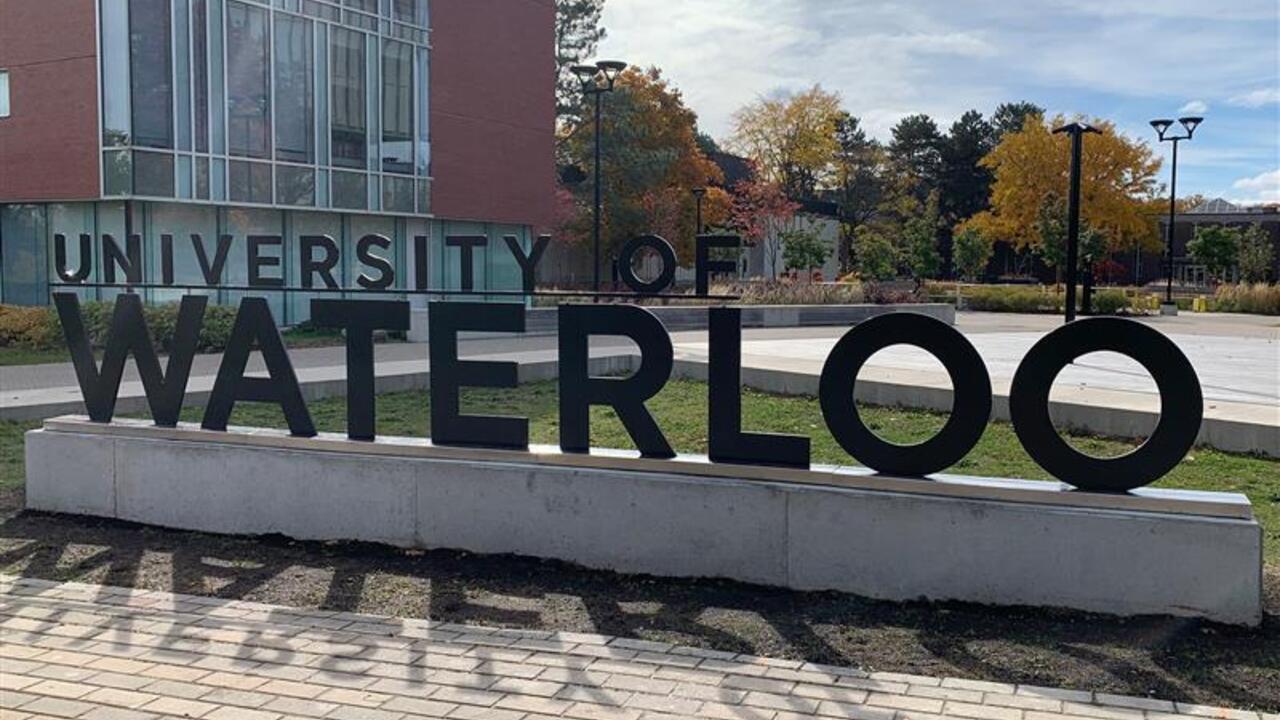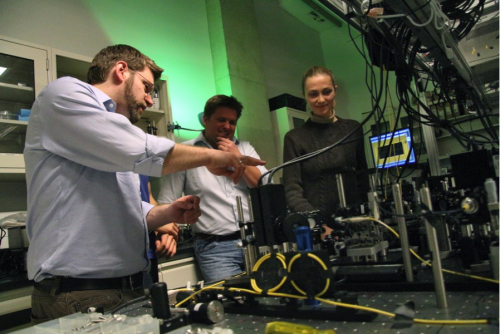
Quantum correlation can imply causation
Contrary to the statistician's slogan, in the quantum world, certain kinds of correlations do imply causation

Contrary to the statistician's slogan, in the quantum world, certain kinds of correlations do imply causation
By Media RelationsResearch from the Institute for Quantum Computing (IQC) at the University of Waterloo and the Perimeter Institute for Theoretical Physics shows that in quantum mechanics, certain kinds of observations will let you distinguish whether there is a common cause or a cause-effect relation between two variables. The same is not true in classical physics.
Explaining the observed correlations among a number of variables in terms of underlying causal mechanisms, known as the problem of 'causal inference', is challenging but experts in field of machine learning have made significant progress in recent years Physicists are now exploring how this problem appears in a quantum context.
Causal inference hinges on the distinction between correlation and causation. “If A and B are correlated, then when you learn about A, you update your knowledge of B – this is inference. If A causes B, then by manipulating A, you can control B – this is influence," said Robert Spekkens, a faculty member at Perimeter Institute and the Department of Physics and Astronomy at Waterloo. "In quantum foundations, this distinction is key.“
Knowing if a correlation arises from a cause-effect relation or a common cause relation is a fundamental problem in science. A prime example: drug trials. When physicians observe a correlation between treatment and recovery, they cannot presume that the treatment is the cause of the recovery. If men are more likely to choose the treatment and also more likely to recover spontaneously, regardless of treatment, then the correlation would be explained by a common cause.
That is why, when testing treatments, pharmaceutical companies intervene and randomly assign either the drug or a placebo to participants. This ensures that the treatment variable is statistically independent of any potential common causes. This is a general feature of classical statistics: one needs to intervene in order to determine whether the correlations are due to a cause-effect relation, a common cause relation, or a mix of both.
The paper, published today in Nature Physics, demonstrates that quantum effects can eliminate the need for intervention. “This research provides a new way to think about quantum mechanics,” said Professor Kevin Resch, Canada Research Chair in Optical Quantum Technologies in the Department of Physics and Astronomy. “It’s also a really useful framework for thinking about foundational problems.”
Spekkens, along with PhD student Katja Ried and fellow theorist Dominik Janzing, considered the situation of an observer who is probing two variables and finds them to be correlated. The observer doesn't know whether this is because they are the input and output of a quantum process, that is, cause-effect related, or because they are the two halves of an entangled quantum state, and therefore correlated by a common cause. They realized that certain patterns of correlations are distinctive to each scenario.

Spekkens with Resch and Ried in Resch’s Quantum Optics and Quantum Information Lab.
Resch, together with his students Megan Agnew and Lydia Vermeyden, had the tools to put this idea to the test. They built a photonic circuit that could switch between the two scenarios proposed by the theorists, allowing them to vary the causal structure realized by the experiment.
Their results confirmed that the quantum effects of entanglement and coherence provide an advantage for causal inference. This parallels the way in which quantum effects can help to solve computational problems and make cryptography more secure. Thinking about which practical tasks are easier in a quantum world has traditionally led to many insights into its foundations.
The team describes their work as opening the door to answering questions such as: How can these techniques be generalized to scenarios involving more than two systems? Is the menu of possible causal relations between quantum systems larger than between classical systems? How should we understand causality in a quantum world?

Credit: shootthebreeze/GettyImages
Read more
Researchers are available to provide expert commentary

Read more
Waterloo Engineering researchers create an AI-powered digital imaging system to speed up biopsy results

Read more
Waterloo co-op students earn opportunity to contribute to SickKids research
The University of Waterloo acknowledges that much of our work takes place on the traditional territory of the Neutral, Anishinaabeg and Haudenosaunee peoples. Our main campus is situated on the Haldimand Tract, the land granted to the Six Nations that includes six miles on each side of the Grand River. Our active work toward reconciliation takes place across our campuses through research, learning, teaching, and community building, and is co-ordinated within the Office of Indigenous Relations.